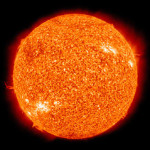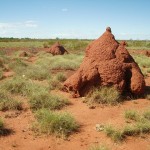Feb
15
Ants vs. Global Warming
FUN FACT: Ants make up 15-25% of the total mass of living animal tissue on the continents!
We’ll get back to the ants in a minute. But, first…
The Sun is a nuclear furnace. Hydrogen, the lightest element and most abundant chemical substance in the universe, is constantly being fused within it into helium. Over the eons, this nuclear fusion has caused the Sun to get brighter and brighter. According to astronomers, the Sun is now about 25% brighter than it was when life first showed up on Earth more than 3.5 billion years ago. You know what’s strange about that? It is estimated that it would only take a 1-2% change in the Sun’s luminosity (i.e., instrinsic brightness, which is accompanied by heat) to sterilize the planet. So, how is it we are even here?
Apparently, we have a combination of life-forms and natural processes to thank for that. Some things are amazingly designed to remove much of the excess “heat-retaining” (aka “greenhouse”) gases — you know, the sort that cause the Climate Change alarmists fits — from the atmosphere, thereby keeping the Earth habitable. The most effective way this is done is via the weathering of silicates (i.e., silicon compounds). Carbon dioxide from the atmosphere reacts with rainwater to make carbonic acid, which then reacts with continental silicates to produce sand and carbonates. The relative amounts of continental silicates available and the carbon dioxide removed depends on the organisms involved.
That’s where the ants come in.
Geologist Ronald I. Dorn recently published a paper in the journal Geology about his discovery of how these ubiquitous little critters contribute in a major way to the reduction of atmospheric carbon dioxide. Field studies have shown that weathering of calcium and magnesium silicates is magnified by a factor of 50 to 300 times in the vicinity of ant colonies! Consider also that the number of ant species — and the overall number of ants — increased a lot during the Paleogene era (66-23 million years ago). This was the period when, following the Cretaceous–Paleogene (K–Pg) extinction event, the mammal population suddenly expanded from a few, relatively small & simple forms into a large and quite diverse group with a great range in size.
The ants may not realize it any more than most of us have, but they have played an important part in keeping the planet temperate enough for life to endure long enough to allow humanity to show up at the best (only?) time to launch and sustain advanced civilization. As SNL’s Church Lady would say, “How con-veeeeen-ient!”
* Adapted from an earlier adaptation (titled “Ants: Amazing Agents of Change”) of an article by Dr. Hugh Ross.

















